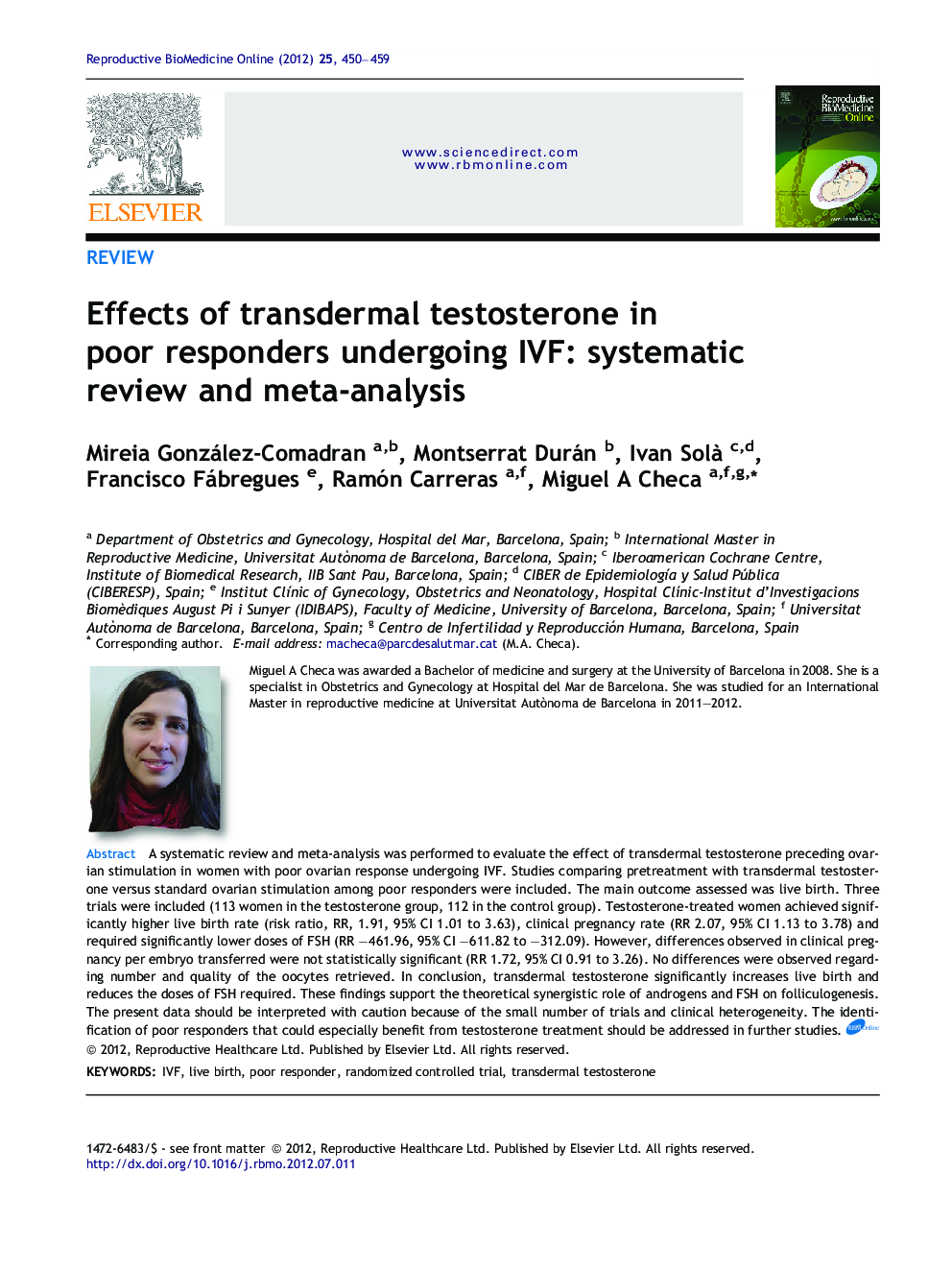| Article ID | Journal | Published Year | Pages | File Type |
|---|---|---|---|---|
| 3970580 | Reproductive BioMedicine Online | 2012 | 10 Pages |
A systematic review and meta-analysis was performed to evaluate the effect of transdermal testosterone preceding ovarian stimulation in women with poor ovarian response undergoing IVF. Studies comparing pretreatment with transdermal testosterone versus standard ovarian stimulation among poor responders were included. The main outcome assessed was live birth. Three trials were included (113 women in the testosterone group, 112 in the control group). Testosterone-treated women achieved significantly higher live birth rate (risk ratio, RR, 1.91, 95% CI 1.01 to 3.63), clinical pregnancy rate (RR 2.07, 95% CI 1.13 to 3.78) and required significantly lower doses of FSH (RR −461.96, 95% CI −611.82 to −312.09). However, differences observed in clinical pregnancy per embryo transferred were not statistically significant (RR 1.72, 95% CI 0.91 to 3.26). No differences were observed regarding number and quality of the oocytes retrieved. In conclusion, transdermal testosterone significantly increases live birth and reduces the doses of FSH required. These findings support the theoretical synergistic role of androgens and FSH on folliculogenesis. The present data should be interpreted with caution because of the small number of trials and clinical heterogeneity. The identification of poor responders that could especially benefit from testosterone treatment should be addressed in further studies.The poor response to ovarian stimulation among women undergoing IVF is of great concern in reproductive medicine. Certain modalities have been tested to improve this response to gonadotrophin stimulation, although results from some studies have shown conflicting results. Hence, a systematic review and meta-analysis was performed in order to evaluate the effect of transdermal testosterone prior to ovarian stimulation among these women with poor ovarian response. The main outcome assessed was live birth rate. In all, three trials were included, which comprehended 113 women in the testosterone group and 112 in the control group. Women that were pretreated with transdermal testosterone achieved significantly higher live birth rate and clinical pregnancy rate and required significantly lower doses of exogenous FSH as compared with controls. However, when clinical pregnancy rate was adjusted per embryo transferred differences observed were not statistically significant. No differences were observed in the number and quality of the oocytes retrieved. In conclusion, transdermal testosterone prior to ovarian stimulation significantly increases live birth and reduces the doses of FSH required among poor responders. In addition, the identification of poor responders that could especially benefit from testosterone treatment should be addressed in further studies.
